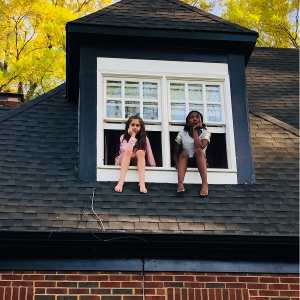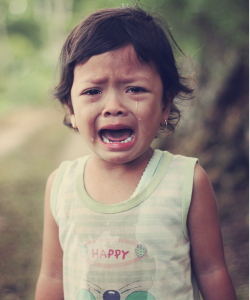I. Introduction To Child Cruelty
Child cruelty refers to any act or omission that causes harm or poses a risk to a child’s physical, emotional, or psychological well-being. This can include neglect, physical abuse, sexual abuse, emotional abuse, and neglectful supervision. Child cruelty can have severe and long-lasting effects on a child’s health, development, and well-being, and it is therefore important for professionals and parents to understand the signs and symptoms of child cruelty and how to report concerns.
II. Physical Abuse as Child Cruelty
Physical abuse refers to any act that causes harm or injury to a child’s body. It can include hitting, slapping, shaking, throwing, or kicking. Physical abuse can also involve neglect, such as withholding food or medical care. Signs of physical abuse may include unexplained injuries, welts, bruises, or burns; behavioral changes such as anxiety or depression; and difficulty sleeping or nightmares. In severe cases, physical abuse can result in broken bones, concussions, or even death. The impact of physical abuse on a child’s physical and mental well-being can be long-lasting and devastating. Children who experience physical abuse are more likely to develop emotional and behavioral problems, including anxiety, depression, and post-traumatic stress disorder (PTSD). They may also have difficulty trusting others and forming healthy relationships in adulthood.
Examples of physical abuse cases include:
- A father who repeatedly beat his son with a belt, leaving welts and bruises on his body. The son developed PTSD and became withdrawn and anxious.
- A mother who shook her baby daughter so violently that she caused bleeding in the brain, leading to permanent cognitive impairment.
- A stepfather sexually assaulted his stepson, causing emotional trauma and feelings of guilt and shame.
- A caregiver who withheld food from a child as punishment, resulting in malnutrition and stunted growth.
- A teacher who physically restrained a student, causing injury and emotional distress.
It is important for educators, healthcare providers, and other professionals who work with children to recognize the signs of physical abuse and report suspicions to the appropriate authorities. Early intervention can help prevent further harm and promote healing for these vulnerable young victims.
III. Emotional Abuse
Emotional abuse is the intentional and unintentional use of emotional or physical power to manipulate or control a child’s emotions. It can have a significant impact on a child’s emotional and psychological development, leading to a range of negative outcomes such as anxiety, depression, low self-esteem, and difficulty with social interaction. Some signs of emotional abuse include physical abuse and/or sexual abuse
IV. Sexual Abuse
Sexual abuse is any behavior that involves sexual intercourse or penetration of a child. It can include physical, emotional, and sexual abuse, as well as sexually explicit or inappropriate behavior. Signs of sexual abuse can include physical injuries, sex injuries, sexually explicit language, and sexually inappropriate behavior. The impact of sexual abuse on a child’s physical, emotional, and social well-being can include physical injuries, such as fractures, bruises, or burns, as well as emotional distress, anxiety, and depression. Sexual abuse can also affect a child’s social and emotional development.

V. Neglect
Signs of neglect in children include:
1. Lack of supervision
2. Unclean living conditions
3. Poor hygiene
4. Lack of access to clean water and food
5. Untrained or unsupervised playtime
6. Neglectful discipline
7. Lack of attention or interest in activities
8. Neglectful discipline
9. Lack of social interaction
10. Neglectful discipline
These signs can have a significant impact on a child’s health, safety, and overall development. For example, a child who is neglected may experience physical and emotional abuse, poor hygiene, and a lack of access to clean water and food.
VI. Domestic Violence and its Effects on Children
Domestic violence is a pattern of behavior that involves physical, emotional, sexual, or financial abuse by one person in a relationship to assert power and control over another. It can take many forms, including hitting, pushing, shoving, name-calling, threatening, and intimidation. The impact of domestic violence on children who witness it can be profound and long-lasting. Children who grow up in households where domestic violence occurs may experience anxiety, depression, post-traumatic stress disorder (PTSD), and other mental health problems. They may also develop low self-esteem, feel helpless, and have difficulty forming healthy relationships in the future. In some cases, they may even become perpetrators of domestic violence themselves.
Studies show that children who are exposed to domestic violence are more likely to engage in risky behaviors such as drug use, early sexual activity, and aggression. They may also have lower academic achievement and higher rates of truancy. Furthermore, children who experience domestic violence are at increased risk for physical injury and death. For instance, a five-year-old boy passed away after his father struck him during a domestic dispute. In another case, a three-month-old baby girl was hospitalized with broken bones and internal injuries after her father threw her against a wall during an argument with her mother. These cases highlight the urgent need for effective interventions to protect children from the harmful effects of domestic violence.
It is important to recognize the signs of domestic violence and seek help if necessary. If you suspect that someone you know is experiencing domestic violence, look for the following signs: frequent injuries, excuses for absences or lateness, changes in behavior or mood, avoidance of certain situations or people, and nervousness or fear around their partner.
Remember, no one deserves to live in fear, especially children.

VII. Prevention and Intervention
Prevention and early intervention are crucial in protecting children from child cruelty. Identifying risk factors and taking proactive steps to address them can help prevent instances of child abuse and neglect. This includes providing support and education to parents, caregivers, and communities on positive parenting practices, healthy child development, and appropriate responses to challenging behaviors. Early identification of potential cases of child cruelty is also critical, as it allows for prompt intervention and minimizes the harm caused to the child.
There are various strategies for identifying and reporting child cruelty. These include:
1. Educating yourself: Learn about the signs of child abuse and neglect, such as physical injuries, behavioral changes, or a lack of adequate supervision. Be aware of the warning signs and take action if you suspect a child may be in danger.
2. Reporting suspicions: If you suspect child cruelty, report your concerns to local authorities, such as Child Protective Services (CPS) or law enforcement. You can also contact national hotlines like the Child Help National Child Abuse Hotline or the National Center for Missing and Exploited Children
3. Supporting families: Offer support and resources to families in need, such as connecting them with counseling services, parenting classes, or other community resources that can help reduce stressors and promote healthy relationships.
4. Community engagement: Encourage community involvement through initiatives like neighborhood watch programs, parent-teacher associations, and faith-based organizations. These groups can help identify potential risks and provide additional eyes and ears to detect signs of child cruelty.
5. Collaboration between agencies: Ensure that different agencies, such as CPS, law enforcement, schools, and healthcare providers, work together effectively to share information and coordinate efforts to address child cruelty.
6. Awareness campaigns: Organize public awareness campaigns to educate the community about the issue of child cruelty, its consequences, and the importance of reporting suspected cases.
7. Providing alternative ways to report: Allow anonymous reporting or online reporting options to encourage individuals to come forward without fear of retribution or judgment.
Numerous organizations offer support and assistance in the fight against child cruelty. Some examples include:
1. Childhelp: A nonprofit organization dedicated to helping victims of child abuse and neglect. They provide counseling, advocacy, and other services to support children and their families.
2. The National Child Abuse Hotline: a 24/7 hotline that provides crisis intervention, referrals, and information on child abuse and neglect.
3. The National Center for Missing and Exploited Children: Works to prevent child abduction, sexual exploitation, and abuse by providing resources, technical assistance, and coordination between law enforcement and other agencies.
4. The nonprofit organizations focused on promoting healthy child development and preventing child abuse through research-based programs and advocacy.
5. Safe Haven Laws: Many countries have laws allowing parents to legally and anonymously surrender their baby at designated safe haven locations, such as hospitals or fire stations, to prevent infant abandonment.
Remember, preventing child cruelty requires a collective effort from individuals, communities, and organizations. By working together and utilizing available resources, we can create safer environments for all children to grow and thrive.


